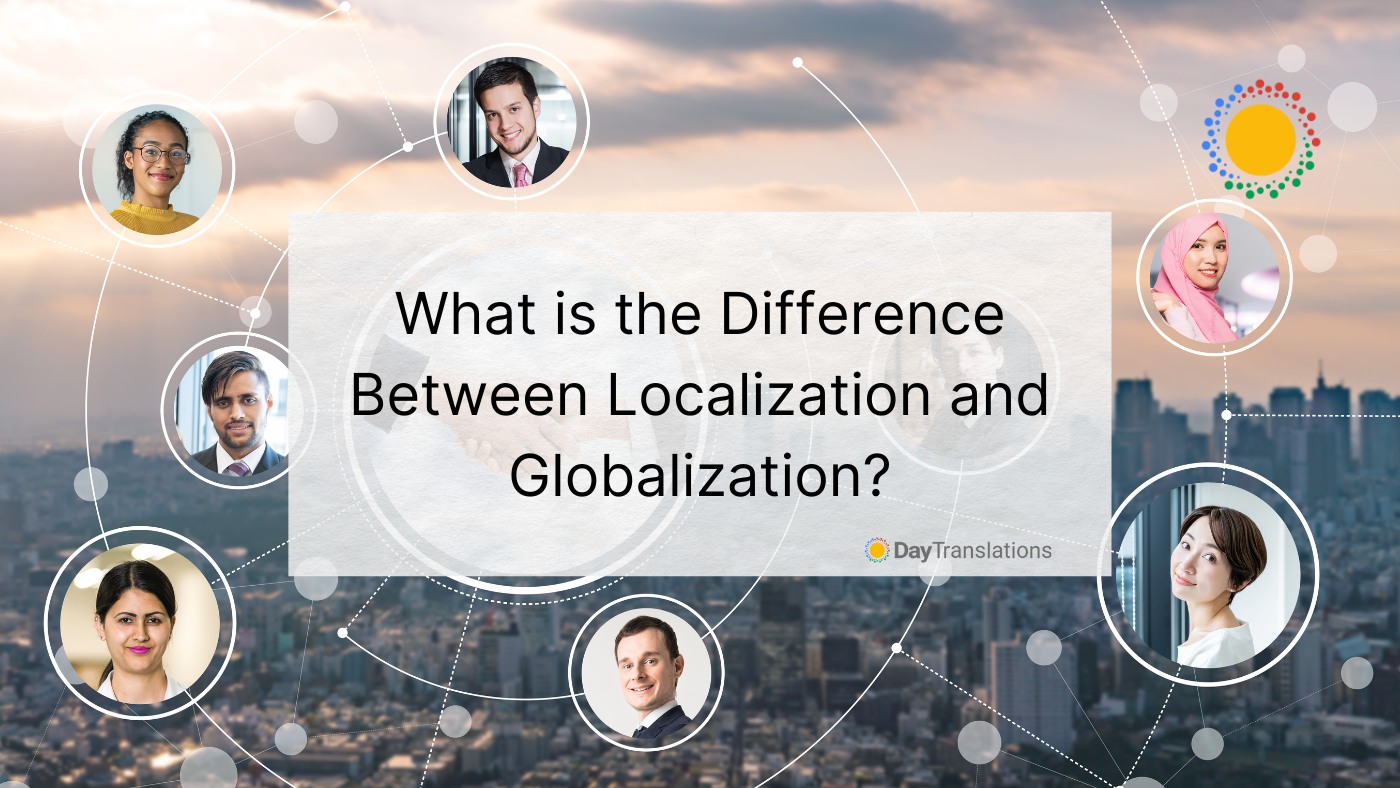In today’s world, businesses continue to expand and go beyond their borders. This is in an attempt to take advantage of international market shares. To do this, there are some tools that businesses can use.
Localization and globalization are examples of such tools. These tools have some similarities but are not quite the same. But if the end goal for either tool is to reach more people, what is the difference? Let’s break down some of these differences below.
What is localization?
Localization is the process of adapting content for specific regions. This process involves the translation of all aspects of content to capture cultural nuances. These aspects include texts, visuals, audio, etiquette, humor, and currency among others. With localization, a business only targets people within a certain region.
Localization is a good tool to use when trying to penetrate a specific market. This is because it passes a message in a unique way that only specific people can relate to.
What is globalization?
Globalization is the process of making content that is available in many languages. This means that the same content has to be acceptable to all the different cultures that consume it. With globalization, the same content is accessible to different people. This is regardless of the language they speak.
Think for example about a popular electronics brand. If you buy a television set from them you’ll find a manual inside the box. Chances are the page you’ll go to is one that has your first language on it. But, if you can read it in another language too, you’ll find that the message is the same. That is globalization at work, selling products in ways that cut across many cultures.
Differences between localization and globalization
Having defined these two terms, there are already stark differences between them. The main difference is in the target audience. Localization targets a specific audience within a specific location. This means that people outside of that location may not relate to your message.
But with globalization, there are no location restrictions. Globalization allows for people in different cultures to consume information. The only difference is in the language they consume it in. Globalization makes it possible for someone in France and another in China to browse through the same website.
There are downsides to globalization when it comes to worldwide availability, though. The main downside is that the local touch that localization captures is missing. This broader audience content sometimes makes it hard to reach niche audiences.
With localization, you can direct content to specific audiences. This unique and direct messaging makes it easier for people to buy into your offer.
Formatting
Another difference between globalization and localization is in the formatting. In globalization, your business will have to create content in different formats. This will allow you to integrate different aspects that appeal to a diverse audience. For instance, most people read sentences from left to right. In a globalized website, the codes have to be flexible to accommodate those who read from right to left.
This means that the website should be user-friendly. This way it can cater to people from western countries and those from the Middle East or East Asia.
Market reach
A limited market is yet another difference between localization and globalization. Earlier on we described localization as adapting content for specific locations. This makes localized content available only for people who can relate to the context.
Anyone outside of that region may not understand what the content is about. And it could be worse; anyone outside that specific locale may get offended by that content. This creates a significant limit to the reach of localized content.
When it comes to globalized content, your message can reach far and wide. This is because there are no specific nuances for any group of people. The information is standard in any language that you choose to consume it in. This gives your business a wider audience that they can try and connect to. A wider audience also presents an opportunity for more people to buy into your offer, but it’s usually a bit harder to get this buy-in from customers with a generic message.
What to use
Both globalization and localization are important for reaching new markets. To identify what you should go for, you’ll need to assess your business needs. If you’re targeting a specific market then you’ll know to choose localization. But if your goal is to go beyond several borders then you’d need to consider globalization.
You can also use both tools to complement each other. Globalizing websites for instance allows for localization down the line. The key is to keep the source codes flexible for such edits.
Day Translations’ services
Expanding into the unknown can be a daunting experience. But this doesn’t mean it’s impossible. With the available tools in the market today you can take your business to new horizons. This is why you need a reliable localization and globalization partner.
At Day Translations, we have helped many different companies with their expansion needs. Give us a call today if you’re looking to expand and we’ll be happy to give you a free quote.














Sorry, the comment form is closed at this time.